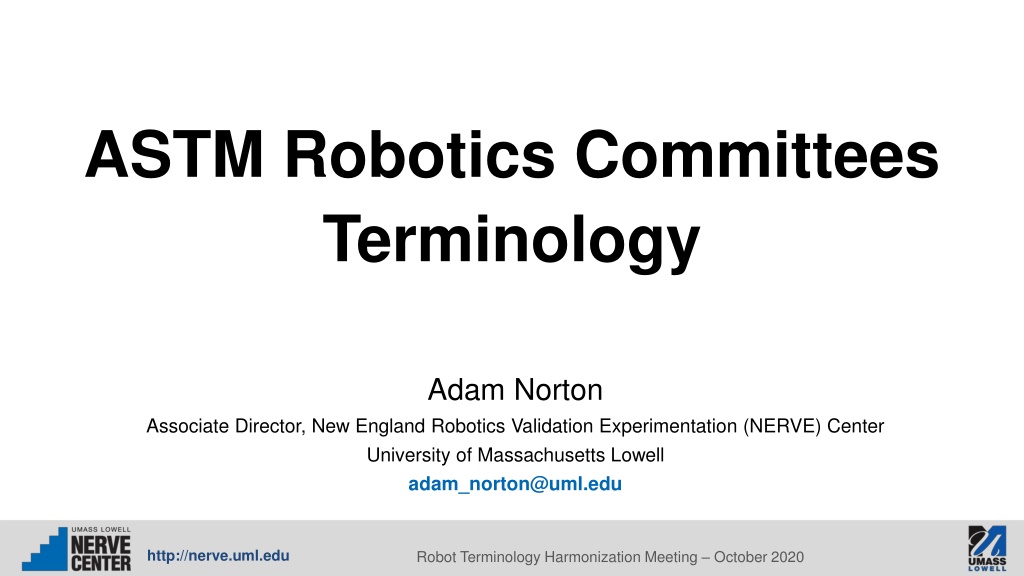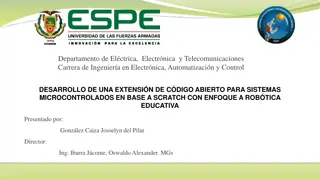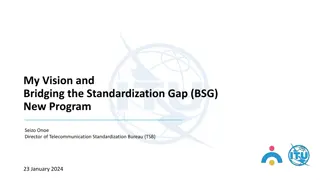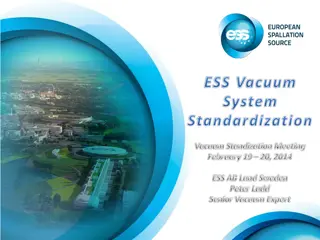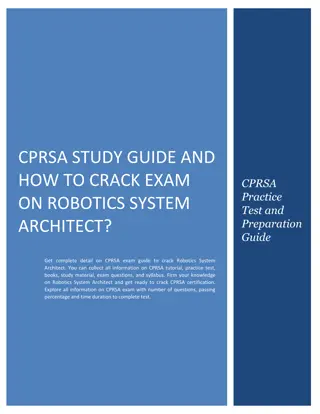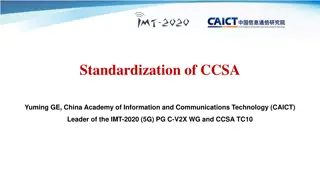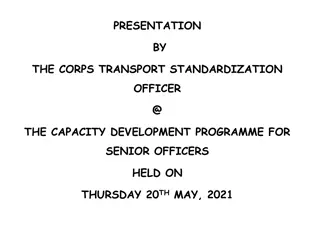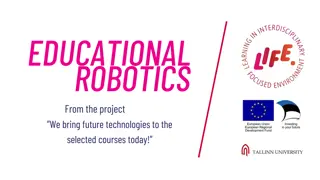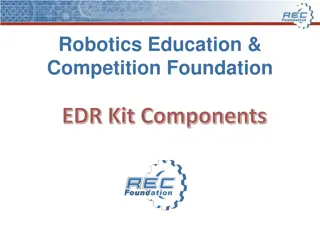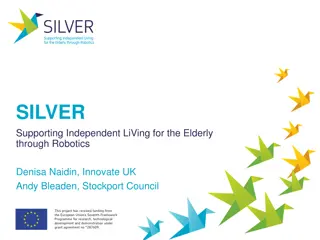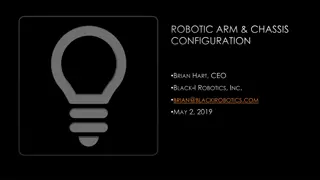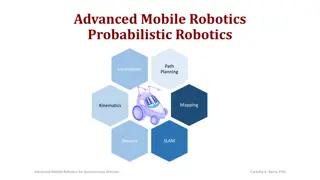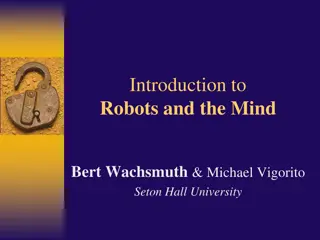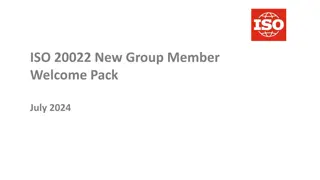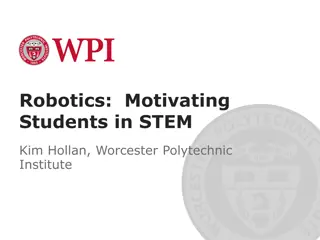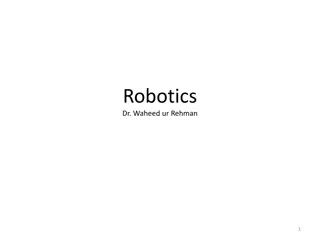Robotics Standardization and Test Methodology Overview
The content discusses the work and focus areas of various ASTM robotics committees, such as E54.09, E57, F45, and F48, emphasizing test methods over specifications of robot activity/behaviors. It delves into terminology harmonization efforts in robotics, navigation issues with impairments, obstacle awareness in A-UGVs, and definitions of actions like test repetition and task completion as per the test methods. The information sheds light on the complexities involved in standardizing robotics operations.
Download Presentation

Please find below an Image/Link to download the presentation.
The content on the website is provided AS IS for your information and personal use only. It may not be sold, licensed, or shared on other websites without obtaining consent from the author. Download presentation by click this link. If you encounter any issues during the download, it is possible that the publisher has removed the file from their server.
E N D
Presentation Transcript
ASTM Robotics Committees Terminology Adam Norton Associate Director, New England Robotics Validation Experimentation (NERVE) Center University of Massachusetts Lowell adam_norton@uml.edu http://nerve.uml.edu Robot Terminology Harmonization Meeting October 2020
ASTM Robotics Committees E54.09 Committee on Homeland Security Applications; Subcommittee on Response Robots E57 Committee on 3D Imaging Systems F45 Committee on Driverless Automatic Guided Industrial Vehicles F48 Committee on Exoskeletons and Exosuits All committees focused on test methods rather than specifications of robot activity/behaviors, so terms are from the test method perspective http://nerve.uml.edu Robot Terminology Harmonization Meeting October 2020
ASTM F45.02 Work Item: Navigation with Impairments Revision of F3244 - 17 Standard Test Method for Navigation: Defined Area impairment, n an object, feature, or quality of the situation that is utilized to disrupt intended A-UGV operation, such as the inclusion of obstacles or communication failures during task performance. Obstacle awareness There are several possible conditions for the A-UGV s obstacle awareness: 1. Incomplete Awareness, Physically Present: Obstacles in the physical space are not virtually present on the map the A- UGV uses to navigate, meaning the A-UGV is not aware of the obstacles until it detects them with its sensors. This condition is still satisfied if the obstacles are within detectable range while the A-UGV is at the start position before a test repetition begins. If the A-UGV generates its own map of the area before starting a test, it shall do so without the obstacles present, but then the obstacles shall be physically added before the test begins. 2. Complete Awareness: Obstacles in the physical space are virtually present on the map given to the A-UGV, meaning the A-UGV is aware of the obstacles and can plan ahead before detecting them with its sensors. In this condition, the edges of the obstacles are equivalent to boundaries and may be used for localization by the A-UGV. If the A-UGV generates its own map of the area before starting a test, it shall do so with the obstacles present. 3. Incomplete Awareness, Virtually Present: Obstacles are virtually present on the map given to the A-UGV, but they are not in the physical space, meaning the A-UGV believes the obstacles are in position, but will not detect them with its sensors. If the A-UGV generates its own map of the area before starting a test, it shall do so with the obstacles present, but then they will be physically removed before the test begins. http://nerve.uml.edu Robot Terminology Harmonization Meeting October 2020
Action E54.09: test repetition or repetition robot s completion of the task as specified in the test method and readiness for repeating the same task when required. F45: repetition performance of a task. F48: activity execution of a task or action by a user or their exoskeleton or exosuit, or both. http://nerve.uml.edu Robot Terminology Harmonization Meeting October 2020
Task E54.09: no defined term, but each test method involves the performance of a task. F45: task sequence of movements and measurements that comprise one repetition within a test. task planning process of solving the task to be carried out by generating a task procedure, which includes subtasks and motions. test a collection of task repetitions. F48: test a collection of task repetitions. (references F45 standard) http://nerve.uml.edu Robot Terminology Harmonization Meeting October 2020
Environment E54.09: no defined term, but each test method has configuration parameters that define properties of the environment (e.g., confinement, lighting, temperature, humidity, etc.). F45: environment map or environment model map or model that describes an environment with its distinguishable features. layout graphical representation of the environment and A-UGV functional space. F3218-19 Standard Practice for Documenting Environmental Conditions for Utilization with A-UGV Test Methods F48: F3427-20 Standard Practice for Documenting Environmental Conditions for Utilization with Exoskeleton Test Methods http://nerve.uml.edu Robot Terminology Harmonization Meeting October 2020
